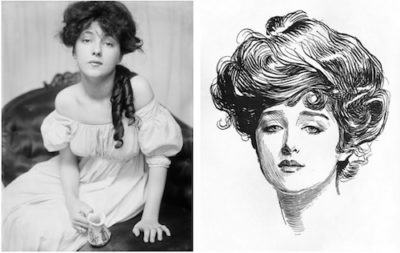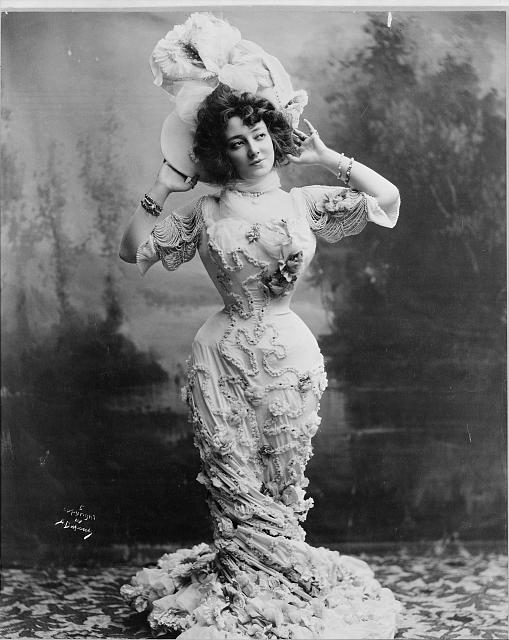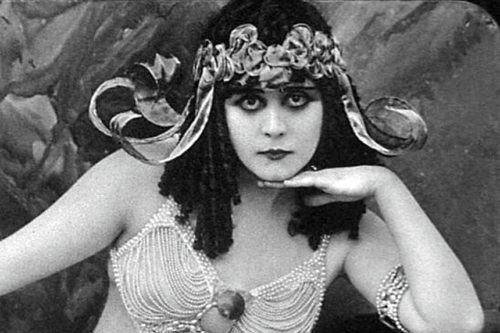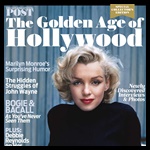9 Sex Symbols Before Marilyn Monroe
Many will scroll past images of Marilyn Monroe on their social media feeds today, on what would have been her 91st birthday, remembering her as the glamourous bombshell of a bygone era. Although Monroe redefined what it meant to be an American sex symbol, she didn’t originate the role. That office was occupied by several women before her, reaching all the way back to the 1860s. Each of these women represented the changing ideals of beauty, charm, mystery, sex appeal, and skimpy outfits, often seasoned with a dash of scandal.
1. Adah Isaacs Menken knew how to get publicity in the 1860s. She wore her hair and her skirts far shorter than was acceptable. She held press conferences in her suite, sipping champagne and smoking cigarettes. But nothing drew attention like her portrayal of a Tartar warrior in the play Mazeppa. At the end of the play, Menken was stripped of her costume, under which she wore flesh-colored tights. The apparently nude actress was then tied to the back of a horse and sent off into the wilderness. New Yorkers were shocked by her performance, but not enough to hurt ticket sales.

2. Lilly Langtry started her career as a famous beauty by becoming a popular artist’s model in England in the 1870s. She had an athletic figure, the result of daily exercise, and face that artists believed was a model of classical beauty. She drew the attention of the Prince of Wales and the two had a scandalous affair, which was an open secret. After breaking up with the Prince, Ms. Langtry sailed to America where she charmed New Yorkers with her poise, manners, and diction, while shocking them with her love affairs.

3. Lillian Russell was a popular singer and actress in the 1880s, famed for her performances in operettas. She came to embody the opulence of turn-of-the-century America. She enjoyed a lavish lifestyle, complete with a gold-plated, diamond-inlaid bicycle custom-made by Tiffany’s. She was admired for her full, statuesque figure, which was widely regarded as the ideal of feminine beauty.

4. Beauty and scandal combined to give Evelyn Nesbit an undeserved reputation as a femme fatale. She was a model for several artists, including Charles Dana Gibson, inspiring him to create his series of “Gibson Girl” illustrations in the 1890s. In 1906, Nesbit’s wealthy but unbalanced husband, Harry Thaw, shot New York architect Stanford White. During Thaw’s trial, the country learned the reason for the shooting: White had befriended the 14-year-old Nesbit, then drugged and assaulted her at age 16. After Thaw was committed to an asylum, Nesbit tried to support herself in vaudeville and early motion pictures, but she never lost the stigma of a “fatal beauty.”

5. In the 1900s, a new manner of beauty came into fashion. Instead of the refined style of the Gibson girl or the voluptuous, full-figured ideal of a Lillian Russell, the popular star of the day was petite, wasp-waisted Anna Held. Her popularity was fueled by a continual flood of promotion by her husband, producer Florenz Ziegfeld. Newspapers and their readers were barraged with photos of Held and articles about her beauty, her jewelry, her fans, and her legendary milk baths.

6. The most popular star of vaudeville in 1910, Eva Tanguay, had an uninhibited, carefree manner. Her singing and dancing conveyed an earthy sensuality. She presented herself as a wild, independent woman, singing songs like “It’s All Been Done Before but Not the Way I Do It”, “I Want Someone to Go Wild with Me”, and “Go As Far As You Like.” Her small, lithe figure and unpretentious style appealed to people who were tiring of the Victorian standards of beauty.
7. Theda Bara was the biggest star of the movies’ silent era, earning the equivalent of $56,000 a week. On film, she usually played a “vamp,” short for “vampire”—a beautiful woman who seduced and destroyed men. Bara performed some variation of this role in nearly 40 movies. Watching her movies today, it’s hard to see what Americans found seductive about her. Bara’s acting is as overdone as the eye makeup she wore. Fortunately, she was helped by some of the most daring costumes seen up to that time.

8. Clara Bow was known as the “It” girl partly because she had starred in a movie of that name, but mostly because she exuded “it” — that combination of charm, humor, and sex appeal. In her silent films of the 1920s, she helped popularize the new, jazz-age woman. A movie director described her as “the personification of the ideal aristocratic flapper: mischievous, pretty, aggressive, quick-tempered and deeply sentimental.”

9. Mae West began singing and dancing on Broadway in the 1910s. She got her first starring role in a play she wrote and directed. It was entitled simply Sex, and before it was shut down by the city authorities, it had raised West to icon status. Several other plays followed, all on adult themes. In Diamond Lil, she drew heavy criticism, and crowds, playing a sexy and smart woman. She continued to play women with pronounced libidos, comporting herself with a mixture of satire and comedy.
Mae West and some of her famous one-liners.
 Interested in glamour and movies? Relive The Golden Age of Hollywood with this new collection of behind-the-scenes interviews — straight from the pages of The Saturday Evening Post — with the celebrities who defined “glamour” for a generation. Order The Golden Age of Hollywood today.
Interested in glamour and movies? Relive The Golden Age of Hollywood with this new collection of behind-the-scenes interviews — straight from the pages of The Saturday Evening Post — with the celebrities who defined “glamour” for a generation. Order The Golden Age of Hollywood today.